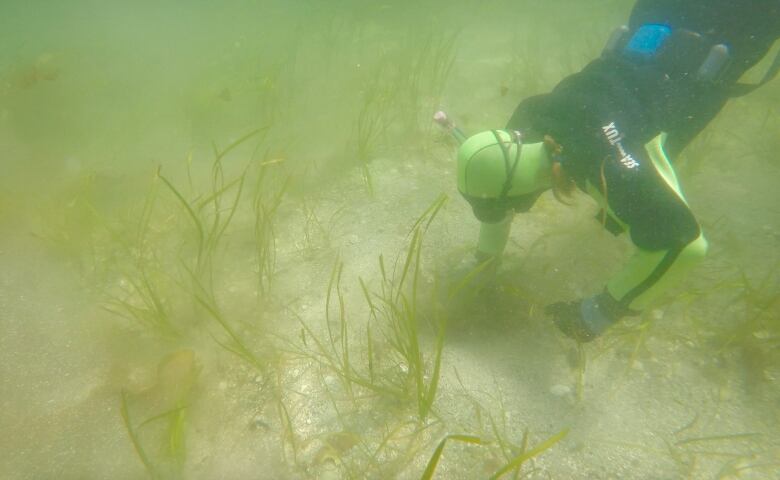Sea otters' seemingly destructive digging is making eelgrass more resilient: study
UVic graduate student finds that sea otters digging in eelgrass meadows increases genetic diversity

Scientists in B.C. have shown how the seemingly harmful actions of one marine species areactually benefiting another.
By digging holes in eelgrass beds, sea otters have helped the long ribbon-like plant become more genetically diverse, according to a new study published this week in the journal Science.
The research was undertaken by University of Victoria graduate student Erin Foster and other B.C. scientists.
"Eelgrass is an important ecosystem and I think it's overlooked sometimes," she said.
Eelgrass meadows prevent shoreline erosion, providehabitat for fish and other species, filtertoxins from ocean water and storecarbon.
"So as we are trying to fight climate change and the climate emergency, having resilient eelgrass meadows will help us mitigate that."

Sea otters, which were nearly wiped out along B.C.'s coast by fur traders, have made a big comeback since being reintroduced in the 1970s. While hunting for food like clams, they end up digging holes in eelgrass meadows, which could be interpreted as a negative impact.
Foster and her colleagues hypothesized that the holes could actually be benefiting the plants. Through their study they discovered that the sea otter disturbance in the meadows forced the plants to more readily flower, which created more genetically diverse plants.
"The pits that the otters are digging provide a spot for the seed to settle and grow," said Foster. "A nice sheltered place where they are getting sunlight because the meadow's been ripped up there."

This is important because although eelgrass can reproduce asexually, new plants are exact clones of their parents, meaning if they are exposed to a heat wave or ocean acidification and are susceptible to it, all the plants will be affected.
More diverse plants and meadows are more robust and better able to withstand the impacts of climate change or other harmful events.
"The genetic diversity in eelgrass meadows that sea otters had reestablished was about 30 per cent greater than in meadows where there were no sea otters," said Foster.
Foster hopes her discovery will encourage people to think more broadly about the effects that species, such as the once-absent sea otter predator, have on the recovery and restoration of ecosystems such as those in the ocean.
With files from CBC's All Points West












_(720p).jpg)


 OFFICIAL HD MUSIC VIDEO.jpg)
.jpg)



























































































